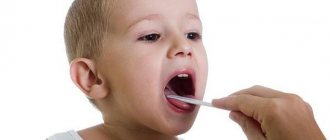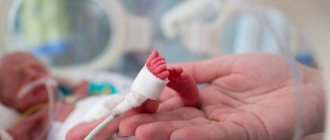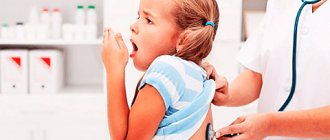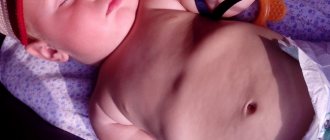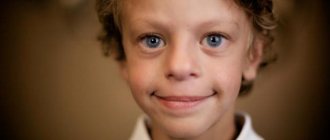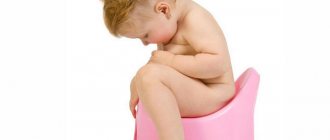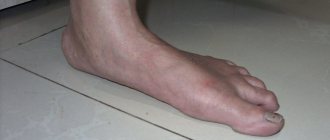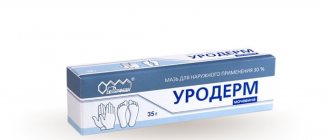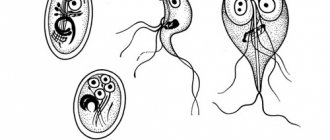Article:
Nowadays, children are increasingly talking about hyperactivity. Many people do not fully understand what this term means and apply it to all mobile and active children. However, hyperactivity is not just increased activity of the baby, it is a violation of the child’s behavioral reactions associated with impaired brain function. What kind of hyperactive child is he? What should the parents of such a child do? After all, they will have to face a lot of problems, learn to correct their child’s behavior, and help him adapt to school, and this is usually very difficult.
What is hyperactivity
The term “hyperactivity” itself means greatly increased activity and excitability of a person. Hyperactivity is most common in children, as they have less control over their emotions.
With hyperactivity, the nervous system is usually unbalanced. The child develops behavioral disorders that require correction. In the modern world, more and more children suffer from this disorder.
Typically, a hyperactive child has the following disorders:
- Cannot concentrate attention on any action for a long time. This especially often causes problems at school.
After all, it is difficult for a child to sit through a lesson, listen to the teacher, and complete assignments. Such children are forgetful and absent-minded. Even sitting in front of the TV for a long time is problematic for such children.
- Increased emotionality and impulsiveness.
Hyperactive children often cannot control their emotions, splashing them out on others, and commit unexpected impulsive actions.
- Motor activity beyond measure.
Many children, especially at preschool and primary school age, are quite active. However, hyperactive children stand out even against their background. They cannot sit still, they literally dance if they are seated. Their hands and legs are in motion, their eyes dart, their facial expressions change.
If a child has one or two of the above disorders, then most likely these are simply age-related behavioral characteristics. With age, the child will learn to better control his emotions, and his behavior will level out. However, if the baby has all of the listed disorders, then this is a reason to consult a specialist.
It is important to suspect and diagnose this disorder in time, rather than later reap the fruits of misunderstanding your child.
From a medical point of view, hyperactivity - hyperdynamic syndrome - is a diagnosis. It can be installed by a neurologist or neurologist. Most often, this diagnosis is associated with minimal brain dysfunction and dysfunction of the central nervous system.
In the next video, Dr. Komarovsky will tell you what hyperactivity is:
Symptoms
Hyperactivity
Hyperactivity is a condition in which a child’s activity and excitability exceeds generally accepted norms and becomes not just a manifestation of temperament, but a problem for the child himself and those around him.
You need to understand that a child is overly active not because he was poorly raised, but because he has a weak nervous system and fatigue easily, so he cannot regulate his behavior on his own.
Attention deficit
Attention deficit is a core symptom of ADHD. Usually most problems at home, in the garden and at school are related to it.
Attention itself has many aspects: focusing, maintaining attention, switching attention, etc. For each age, there are certain norms for maintaining attention over time. In ADHD, these values are not age-appropriate and are referred to as Distractibility.
Distractibility is a disorder of attention in which there is a rapid switching to new objects in the external environment or to internal processes: random associations, thoughts, memories, etc.
Impulsiveness
Impulsivity is a lack of control over one's behavior under certain environmental demands. As expressed in children with ADHD:
- when completing tasks, it is difficult for them to wait until the instructions are completed and they begin to do everything ahead of time, incorrectly assess the complexity, and do not delve into the requirements for the task;
- cannot foresee the consequences of their actions, as a result they often find themselves in unpleasant or dangerous situations;
- often expose themselves to unnecessary risks in order to impress or attract the attention of peers, for example. This results in increased trauma (they often fall, get hurt, break arms and legs), and accidents are common.
Impulsive children are often called careless, careless, frivolous.
When it appears
It is believed that hyperdynamic activity syndrome manifests itself most clearly in preschool (4-5 years) and primary school age (6-8 years). The child ends up in a children's group and cannot withstand the modern pace of learning.
All the signs of his hyperactivity immediately appear: the teacher or educator cannot cope with the child, he does not master the curriculum and other problems of his behavioral disorders.
However, the first signs of hyperdynamic syndrome can be detected in infancy. Such babies are very active and emotional: they get unstuck from their diapers, fall, if you just turn away for a moment, they sleep poorly, their sleep is superficial, restless, and they can scream all night for no reason.
As they grow older, the behavior of hyperactive children continues to “delight” their parents: they get out of playpens and strollers, often fall, get into everything, and knock over everything.
Babies are already 1-2 years old and active and overly mobile; mothers can barely keep up with them. They are not interested in games where you need to think, add, build. It is difficult for a hyperactive child to finish listening to a fairy tale or watching a cartoon; he cannot sit still.
What should parents do if they suspect their child has hyperactivity disorder?
First alarming symptoms
According to statistics, attention deficit disorder is diagnosed in 3-5% of preschool children. Early detection of symptoms allows the problem to be eliminated before entering school. In approximately 30% of children, the disease resolves with age. After 14 years, the symptoms either gradually fade away, or the person learns to stop them on their own.
It is curious that attention deficit occurs much more often in boys than in girls. At the same time, the nature of the syndrome in boys is aggressive, while girls suffer from inattention. Hyperactivity syndrome can be recognized in infancy.
A baby with attention deficit disorder sleeps restlessly and moves a lot during waking hours. Such children are overly attached to their mother. They actively and vigorously perceive a change in situation. The toys offered to the baby instantly become uninteresting. Games captivate the baby for only a few minutes.
With the onset of preschool age, the symptoms become more and more distinct. The child cannot sit through classes in kindergarten. It is difficult for him to find a common language with his peers. Some children with ADHD exhibit unreasonable aggression towards others. Any prohibitions and instructions are ignored. They have increased physical activity.
In addition to learning problems, ADHD also interferes with a child’s social adaptation. Excessive aggression and increased excitability provoke conflicts with peers and teachers. Difficulties in raising a child with ADHD begin in preschool age. If the problem has not been solved, the symptoms worsen as the child moves to the school desk.
Symptoms of increased activity in a schoolchild:
- Inattention in class. The child’s attention often switches, it is difficult for him to concentrate and listen to the teacher.
- Unconscious motor reflexes. The student cannot sit still calmly, he fidgets and behaves restlessly. In situations where increased attention is required, he may even get up and leave.
- The child cannot remain silent when the teacher demands it.
- The child’s homework and chores are left unfinished. A word or sentence in a notebook may break off in the middle.
- In a situation where you have to wait your turn, the child cannot stand it for even a few minutes.
- There are problems with self-discipline. The student cannot organize his own work process.
- the child consciously avoids situations where attentiveness and perseverance are required.
- It is not uncommon for children with ADHD to lose personal belongings or forget basic things.
- They are also characterized by increased talkativeness. The student interrupts others and does not allow them to finish their speech.
- The student deliberately provokes conflict. In games he does not adhere to the rules and argues.
- He cannot evaluate the results of his own actions. In situations where he is wrong, he denies his guilt.
- During lessons, the teacher cannot get the attention of such a child.
- In a dream, hyperactivity manifests itself as fussing. The baby tosses and turns, throws off the blanket and crumples the sheets. He may talk or scream in his sleep. He wakes up several times during the night.
Of course, the symptoms described above periodically “visit” any child. All kids sometimes get excited or don’t want to sit quietly in class. However, in children with ADHD the situation is repeated systematically.
Norm or pathology. False hyperactivity
Very often, hyperactivity is confused with normal child behavior, because most children aged 3-7 years are quite active and impulsive, and have difficulty controlling emotions. If a child is restless and often distracted, then they say that he is hyperactive. However, for elementary school children, a lack of concentration and the inability to sit still for a long time is usually the norm. Therefore, hyperdynamic syndrome can be difficult to diagnose.
If a child, in addition to attention deficit and increased activity, has problems establishing relationships with peers, is inattentive to the feelings of others, does not learn from his mistakes, and does not know how to adapt to the environment, then these signs indicate a pathology - attention deficit hyperactivity disorder (ADHD).
From a neurological point of view, this diagnosis is quite serious and the child needs treatment, the sooner the better.
Diagnostics
If parents suspect that their child has ADHD, they should consult a pediatric neurologist. The doctor will prescribe the appropriate examination that needs to be completed. Indeed, more serious pathologies may be hidden under the symptoms of hyperdynamic syndrome. Diagnostics includes three stages:
- The doctor collects data on the child’s behavior and reactions , the characteristics of pregnancy and childbirth, previous diseases, and hereditary pathologies of family members.
- Conducts special tests and evaluates the results and the amount of time spent, as well as the reaction and behavioral characteristics of the child. Usually such tests are carried out for children 5-6 years old.
- Electroencephalogram . This examination assesses the condition of the child's brain. It is painless and harmless.
After receiving all the results, the neurologist makes a diagnosis and gives his conclusion.
How to make an appointment with a neurologist
You can make an appointment with a pediatric neurologist at Meditsina JSC (academician Roitberg’s clinic) by phone. Also use the feedback form by sending a request using the website, or order a call.
The clinic employs experienced doctors of various specialties with extensive work experience. JSC "Medicine" (clinic of academician Roitberg) is located in the center of Moscow, in the Central District. After communicating with the child, the specialist will prescribe treatment and monitor the recovery process.
Signs
The main signs that help recognize a child’s hyperactivity:
- The child has increased causeless motor activity . He spins all the time, jumps, runs, climbs everywhere, even if he knows that he shouldn’t. It lacks the process of inhibition in the central nervous system. He just can't contain himself.
- He cannot sit still ; if you sit him down, he spins, gets up, fidgets, and cannot sit still.
- During a conversation, he often interrupts the interlocutor, does not listen to the question to the end, speaks off topic, and does not think about it.
- Can't sit quietly . Even when playing, he makes noise, squeaks, and makes unconscious movements.
- He can’t stand in line, he’s capricious and nervous.
- Has problems communicating with peers . Interferes in other people's games, pesters children, and does not know how to make friends.
- Does not take into account the feelings and needs of other people.
- The child is very emotional and has no ability to control either positive or negative emotions . Often causes scandals and hysterics.
- The child's sleep is restless and often does not sleep at all during the day. In his sleep he tosses and turns, curls up into a ball.
- Quickly loses interest in classes , jumping from one to another and not finishing them.
- The child is absent-minded and inattentive , cannot concentrate, and often makes mistakes because of this.
Parents of hyperactive children face difficulties from an early age. The child does not obey his parents, it is necessary to control him all the time, constantly being nearby.
You can learn more about the signs of this syndrome by watching the video:
Sometimes defiant behavior can be caused by age-related changes, for example, often two-year-old children stop obeying their parents, and three-year-olds throw tantrums for any reason.
Content
- ADD and hyperactivity: what is it Types of hyperactivity
- Biological factors
- Hyperactivity
- ADHD or not?
Causes
Experts consider the following situations to be the main reasons that can cause dysfunction of the child’s nervous system, and, consequently, hyperactivity syndrome:
- Heredity (genetic predisposition)
- Damage to brain cells in the prenatal period or during labor.
This may be fetal hypoxia, infections, birth injuries.
- Disorders caused by an unfavorable family environment, abnormal living conditions, improper educational process, illnesses and injuries after birth.
According to statistical data, male children are more likely to suffer from hyperactivity. For every five boys, only one girl is diagnosed with this condition.
Laboratory confirmation of diagnosis
Information provided by parents is considered most important for making a diagnosis. However, the doctor makes the final verdict only on the basis of the examination results. The child will have to undergo some simple procedures. The examination includes the following stages:
- Electroencephalography is a study aimed at studying the bioelectrical functioning of the nervous system. Brain activity can be assessed both during sleep and during wakefulness.
- M-echo - analysis of the ultrasound signal of various areas of the brain.
- Rheoencephalography is an examination of the blood vessels of the brain.
- MRI - a magnetic field is projected onto a screen in the form of a three-dimensional image of the area of the brain being studied.
Classification of attention deficit hyperactivity disorder
There are the following types of attention deficit hyperactivity disorder (ADHD):
- Hyperdynamic syndrome without attention deficit.
- Attention deficit disorder is present, but without hyperactivity (it usually occurs in female children - these are calm, absent-minded, quiet girls).
- Combination of attention deficit disorder and hyperdynamism.
ADHD can be primary, occurring in utero, or secondary (acquired), acquired after birth as a result of injury or disease.
There is also a distinction between a simple form of the disease and a complicated one. In the complicated form of ADHD, other signs are added to the symptoms: nervous tics, stuttering, enuresis, headaches.
Treatment
Treatment of ADHD requires a comprehensive approach. Some procedures, medications, and diets are used, but the main emphasis is on psychological correction and the right approach to raising a hyperactive child.
Only a doctor can prescribe medications! The medication is taken under the supervision of a specialist. In addition, it is possible to use procedures involving stimulation of the brain with weak pulses of electric current.
The child’s nutrition is also important. So, with an unbalanced diet, children’s metabolism is disrupted, which can provoke irritability and moodiness. A growing body requires protein, vitamins and minerals. The diet should contain foods with high levels of Omega 3 fats, which have a beneficial effect on the central nervous system. But it is better to reduce the amount of sweets and carbohydrates. It is better to give your child berries and fruits. You can leave a little dark chocolate in your diet.
Psychological correction of the child’s behavior is mandatory during treatment. The psychologist helps the child better understand his actions, and will also give advice to parents on building relationships with such a child and methods of raising and teaching him.
Most children “outgrow” this disease if they have no complications and receive timely treatment. In some cases, ADHD continues into adulthood, especially if timely and adequate assistance is not provided to the child.
How to treat ADHD
First, some good news.
From 30 to 70% of children Slideshow ADHD is Adults who have been diagnosed with the syndrome “outgrow” it with age.
For other children, the disorder remains for life. It is not always possible to cure it completely. Attention Deficit Hyperactivity Disorder (ADHD). However, there are quite effective correction methods that can reduce symptoms.
Psychotherapy
In particular, we are talking about behavioral therapy. A qualified psychotherapist will help the child cope with emotions and disappointments, teach social skills in a playful way, for example, waiting his turn and sharing, and will not allow self-esteem to sag.
Working in the family
Family relationships are a key part of successful correction. It is extremely important for parents to do everything possible not to increase their child’s already high stress levels.
Don't scold him for inattention, slowness or restlessness: with ADHD, children are objectively unable to cope with this. Your task is to be supportive, to show your child that he is loved no matter what. You may also need psychotherapy, which will teach you how to control your own emotions and tell you where to get the psychological resources necessary for communication.
Here's what Slideshow ADHD in Children mom and dad can do:
- Organize your child's home life. Try to maintain a strict daily routine with clearly designated times for getting up, breakfast, getting ready for kindergarten or school, bathing, and going to bed. It is also worth creating a schedule that will remind your child what he should do during the day. Be sure to place your schedule sheet somewhere visible, such as with a magnet on the refrigerator door.
- Adjust your diet. Diet studies have produced mixed results. But there is still reason to believe that certain foods may help the brain cope with the disorder. Add foods high in protein to your daily diet - meat, eggs, beans, nuts. Try to replace fast carbohydrates such as sweets and cakes with slow ones - fruits, whole grain bread. An important nuance: before changing the diet, you should consult on this topic with the pediatrician observing the child.
- Limit your time watching TV and playing with gadgets. No more than 2 hours a day!
- Be consistent in your actions. Children with ADHD need clear and predictable rules to follow.
Drug therapy
The most commonly used drugs for the correction of ADHD are nootropics (substances that improve brain function) and psychostimulants (help control behavior). Only a doctor can decide which drug is needed in your case.
You must be prepared for the fact that the chosen medicine may turn out to be ineffective, and then a change in drug will be required.
You should also tell your healthcare professional if you experience any side effects, including decreased appetite or trouble sleeping. This is also an indication for looking for another medicine.
Features of communication with such children
Raising a hyperactive child can be difficult. Even with strong love for their child, parents cannot always withstand all his tricks; they often break down and scream. And it happens that they stop raising him altogether, deciding “what he grows up, he grows up.”
It is not uncommon for parents to try to instill strict discipline in such a child, brutally suppressing all his antics and disobedience. The child is punished for the slightest offense. However, such upbringing only aggravates the child's behavior problems. He becomes more withdrawn, insecure, and disobedient.
You should not go too far in relation to children with ADHD, so as not to add new problems to existing disorders (stuttering, urinary incontinence, etc.). It is necessary to find a different approach to each child with ADHD, taking into account his neurological characteristics.
Scale of the problem
How many children like this are there in the world?
According to epidemiological studies in different countries, the incidence of this disorder ranges from 1-3% to 24-28%.
By age, this is approximately 5% among children under 18 years of age, 6% among school-age children, 3% among adolescents.
According to statistics, the leaders in the number of children with ADHD are the USA (4 - 20%) and Russia (7 - 16%). Then come China (1 – 13%) and Italy (3 – 10%).
*Data from “Hyperkinetic disorders” (ADHD) Koren E.V., Kupriyatnova T.A – Federal Medical Research Center for Psychiatry and Narcology named after V.P. Serbian Ministry of Health of Russia, Moscow, 2015.
The dispersion in statistics is due to the fact that different countries have different criteria and diagnostic methods.
What should parents, educators and teachers do?
A child with hyperdynamic syndrome requires a lot of parental attention. It is necessary to try to listen to him, help him complete tasks, develop his perseverance and interaction with the outside world. He needs praise and rewards, approval and support, more parental love. Before punishing a child, parents should take into account that he is quite normal in intelligence, but he has problems regulating his motor activity. Therefore, he does not deliberately do what he was forbidden, but simply cannot stop himself.
It is necessary to properly organize your daily routine. Come up with your own rituals. Walk outside more. It is advisable to enroll your child in a sports section. Swimming, gymnastics, running, horse riding, and sports dancing are good options. It is also necessary to set up a sports corner at home so that the child has a place to splash out his energy.
When sending your child to kindergarten, you need to choose a suitable one in advance, where there are groups with the opportunity to play, children actively move, complete tasks and answer as desired. Talk to the teacher about the baby's special needs.
If a child’s behavior causes a conflict in the kindergarten, then it is better to take him out of there. You can’t blame the baby that he’s to blame for this, say that this group just didn’t suit him.
Studying at school also has its difficulties. Discuss what a teacher should do so as not to traumatize a hyperactive child and help him adapt in the classroom. When doing homework, you should prepare in advance and avoid distractions. Classes should be short but effective so that the child does not lose attention. IN
It is important to do your homework regularly, at the same time. It is necessary to observe the child and determine the most appropriate time: after meals or after physical activity. When punishing a hyperactive child, you should not choose those that do not allow him to move: put him in a corner, sit him on a special chair.
In this situation, you will also find the following materials useful: why a child is nervous and aggressive, how to punish bad behavior. And please note that the reasons for “disobedience” at different ages can be different - at 2, 3, and 4 years old, significant changes occur in the child’s development and he may become more capricious.
Hyperactivity in preschool children
ADHD in children who have not yet reached school age has certain characteristics. Hyperactivity in patients is observed from a very early age, which indicates an innate predisposition to potential disorders. However, doctors do not recommend making a diagnosis confirming a neurological disorder before the age of 5-12 years.
This is due to the peculiarities of the formation of the psyche of a small child. Many children are characterized by increased emotionality, which does not indicate the presence of pathology. Additionally, behavior is affected by the first crises of adolescence, which a person experiences with varying degrees of severity during the period of approximately three and seven years. At this time, every child becomes capricious and begins to attract the attention of adults, becoming either too passive or hyperexcitable.
In preschool age, parents or teachers can only pay attention to a certain predisposition of the child to the future development of pathology. If symptoms persist for months and years, parents should carefully monitor the child’s behavior, pay attention to his communication with peers, and educational progress. Confirmation of the diagnosis is carried out only after a minimum of five years of age.
Hyperactivity syndrome is a pathology that, without proper treatment, can significantly worsen the patient’s quality of life at any age. This neurological diagnosis will be monitored by experienced specialists. The help of doctors and relatives ensures proper adjustment of the behavior of people suffering from ADHD.
Positive qualities of hyperactive children
Despite all the unpleasant behavioral characteristics of children with hyperdynamic syndrome, they also have many positive qualities, the development of which parents should pay special attention to.
- A hyperactive child has creative, creative thinking.
He can come up with a lot of interesting ideas, and if you have enough patience, he can be creative. Such a child is easily distracted, but has a unique view of the world around him.
- Hyperactive children are usually enthusiastic. They are never boring.
They are interested in many things and are, as a rule, bright personalities.
- Such children are energetic and active, but often unpredictable.
If they have a motive, then they do everything faster than ordinary children.
- A child with ADHD is very flexible, resourceful, and can find a way out where others would not notice, and solve a problem in an unusual way.
The intelligence of children with ADHD is not impaired in any way. Very often they have high artistic and intellectual abilities.
Specific ways to communicate and interact with such children are given in the following video:
Advice from psychologists
Psychologists note that if a child has signs of hyperactivity, then they should begin to eliminate them, the sooner the better. This approach helps to avoid difficulties arising from the child’s behavioral disorders, stress and disappointment on the part of his parents and surrounding people, and even the baby himself. Therefore, when a diagnosis of ADHD is established, you should not neglect the help of a specialist doctor and psychologist, so as not to waste time.
Psychologists note that a properly organized daily routine and a favorable family environment helps a child in the treatment of ADHD. In addition, the psychologist’s advice is as follows:
- Provide your child with a calm, stable, non-stimulating environment. This will help reduce the accumulation and release of strong emotions.
- He must develop the necessary reflexes that will help him strictly adhere to the daily routine. For example, go to bed after mom reads a fairy tale or sings a song.
- To relieve excess physical activity, it is necessary to organize classes for the child in sports sections.
- Do not force a hyperactive child to do tedious work for a long time or sit in one place. Periodically allow active activities to release excess energy.
Eliminating problems associated with hyperactivity in children is a completely feasible task. The main thing is to give the child the opportunity to throw out excess energy, to interest him in the learning process, to develop creative abilities, and most importantly to take into account the child’s characteristics when assessing his actions.
Cartoons for the prevention of hyperactivity.
The following cartoons will help your child understand more about his condition; by discussing the plot and characters with your child, you can help him fight this problem.
Here's a list of cartoons:
- "Fidget, Myakish and Netak"
- “Masha is no longer lazy”
- “He’s so absent-minded”
- "Wings, Legs, and Tails"
- "Petya Pyatochkin"
- "Monkeys"
- "Naughty Bear"
- "I don't want to"
- "Octopuses"
- "Naughty Kitten"
- "Fidget"
